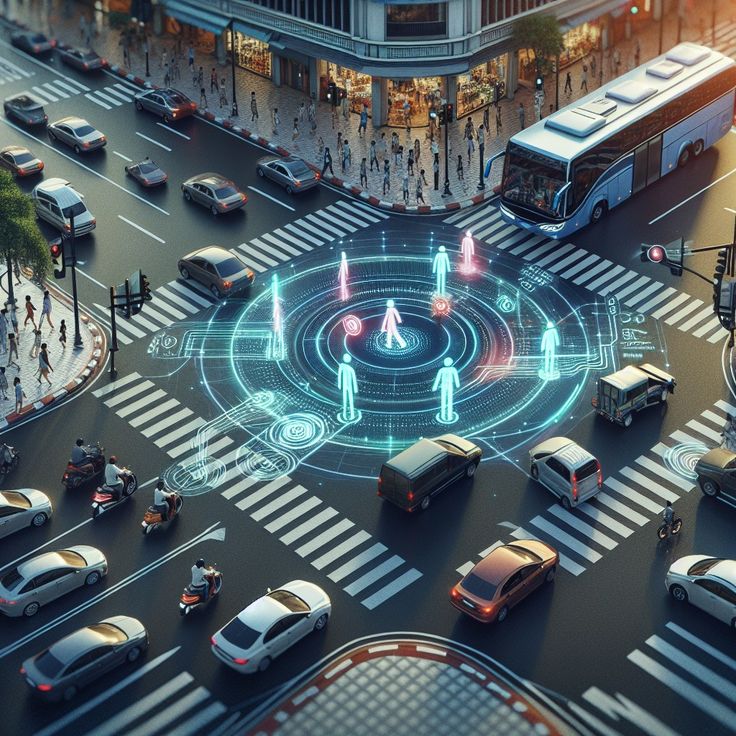Public Services: AI-enhanced DMV, tax, and licensing services with reduced wait times

Project Overview
Industry: Public Sector / Citizen Services
Scope: Modernization of DMV, tax administration, and professional licensing services
Project Duration: 9 months
Team Size: 2 AI engineers, 3 government service managers, 2 UX designers, 1 compliance officer
Business Challenge
Government agencies providing high-volume citizen services (DMV, tax offices, licensing boards) faced ongoing challenges:
- Long in-person wait times at service centers (often 2–3 hours)
- Backlogs in processing licenses, registrations, and tax filings
- Limited self-service options, leading to overwhelming call centers
- High error rates in manual data entry and form processing
- Public dissatisfaction with service efficiency and accessibility
These bottlenecks reduced citizen trust, staff efficiency, and overall service quality.
Our Approach
We compared traditional process automation against AI-enhanced citizen service platforms. The AI-driven approach was chosen for:
- Efficiency Gains – Automated data processing and form validation reduce backlogs
- Personalized Citizen Services – AI chatbots and digital assistants guide citizens in real time
- Self-Service Accessibility – Expanded online portals with AI triage to reduce physical visits
- Error Reduction – ML models detect anomalies and missing information before submission
- Equity & Compliance – System designed to meet accessibility standards and government regulations
We developed a citizen-facing AI service hub integrating chatbots, automated form processing, scheduling optimization, and digital licensing services.
AI-Powered Citizen Services Features
- Virtual assistants for DMV, tax, and licensing inquiries
- AI-driven form pre-validation to reduce processing errors
- Intelligent appointment scheduling to minimize in-person wait times
- Automated document verification using computer vision
- Multilingual digital support for diverse citizen groups
Implementation Process
- Phase 1: Needs assessment with DMV, tax, and licensing departments
- Phase 2: Development of AI-powered virtual assistant and document automation modules
- Phase 3: Pilot rollout for driver’s license renewals and tax filing assistance
- Phase 4: Integration across all service departments with appointment and case management tools
- Phase 5: Full deployment with citizen feedback loops for continuous improvement
Quality Assurance
- Compliance testing with accessibility and government standards
- Human oversight for high-value or disputed cases
- Regular user experience audits for clarity and fairness
- Performance monitoring dashboards for service efficiency
Results
Productivity Improvements
- Average citizen wait times reduced by 65% (from 2 hours to under 40 minutes)
- 50% reduction in call center volumes due to AI-driven self-service
- Processing errors reduced by 30% with automated validation
- 70% faster turnaround time for license renewals and tax filings
Service Quality Outcomes
- 85% citizen satisfaction rate with digital self-service tools
- 60% increase in adoption of online portals for renewals and filings
- Accessibility compliance improved for multilingual and differently-abled users
- Consistent service delivery across all departments
Government Impact
- Increased public trust in digital-first government services
- Freed staff from repetitive tasks, enabling focus on complex citizen cases
- Operational costs reduced by 25% through automation
- Enhanced transparency and accountability through digital records
Technical Implementation
- AI Models: NLP for citizen inquiries, computer vision for document verification
- Platform: Secure government-grade cloud infrastructure
- Integration: APIs connected with DMV, tax, and licensing databases
- Security: Data encryption, audit logging, and compliance with privacy laws
Key Features
- AI-powered chatbots for 24/7 support
- Smart appointment scheduling and queue optimization
- Automated form pre-validation and document verification
- Multilingual digital assistance
- Real-time analytics dashboards for government managers
Client Feedback
The AI platform has dramatically improved our citizen services. Wait times are down, errors are fewer, and people are finally able to complete tasks online without frustration. This is a true leap forward for modern government services.
Implementation Timeline
After AI Implementation
- 65% reduction in wait times
- 50% drop in call center demand
- 30% fewer processing errors
- Digital-first service adoption by majority of citizens
Before AI Implementation
- 2–3 hour average wait times
- High call center volumes and staff burnout
- Frequent data entry errors in citizen applications
- Limited self-service and digital accessibility
Quality Control Process
- Automated service quality scoring and uptime monitoring
- Regular compliance reviews against government service mandates
- Citizen satisfaction surveys integrated into the platform
- Oversight by a digital transformation task force
Implementation Challenges
- Integrating AI with legacy government IT systems
- Addressing citizen concerns about data security and privacy
- Ensuring inclusivity for non-digital-native populations
- Training staff to adapt to hybrid digital + in-person workflows
Continuous Improvement
- Quarterly updates with new AI modules (e.g., advanced fraud detection in tax filings)
- Expansion of virtual assistant coverage to new services
- Sentiment analysis from citizen interactions to refine communication tone
- Adaptive load balancing for peak demand periods (e.g., tax season, license renewals)
Future Enhancements
- Expansion into mobile-first government apps with digital ID integration
- AI-powered fraud detection and anomaly checks in tax and licensing submissions
- Blockchain-backed digital identity verification for citizen trust and security
- Predictive analytics to forecast service demand and allocate resources
Explore More Case Studies

Transportation: Traffic management and public transit optimization with AI analytics
